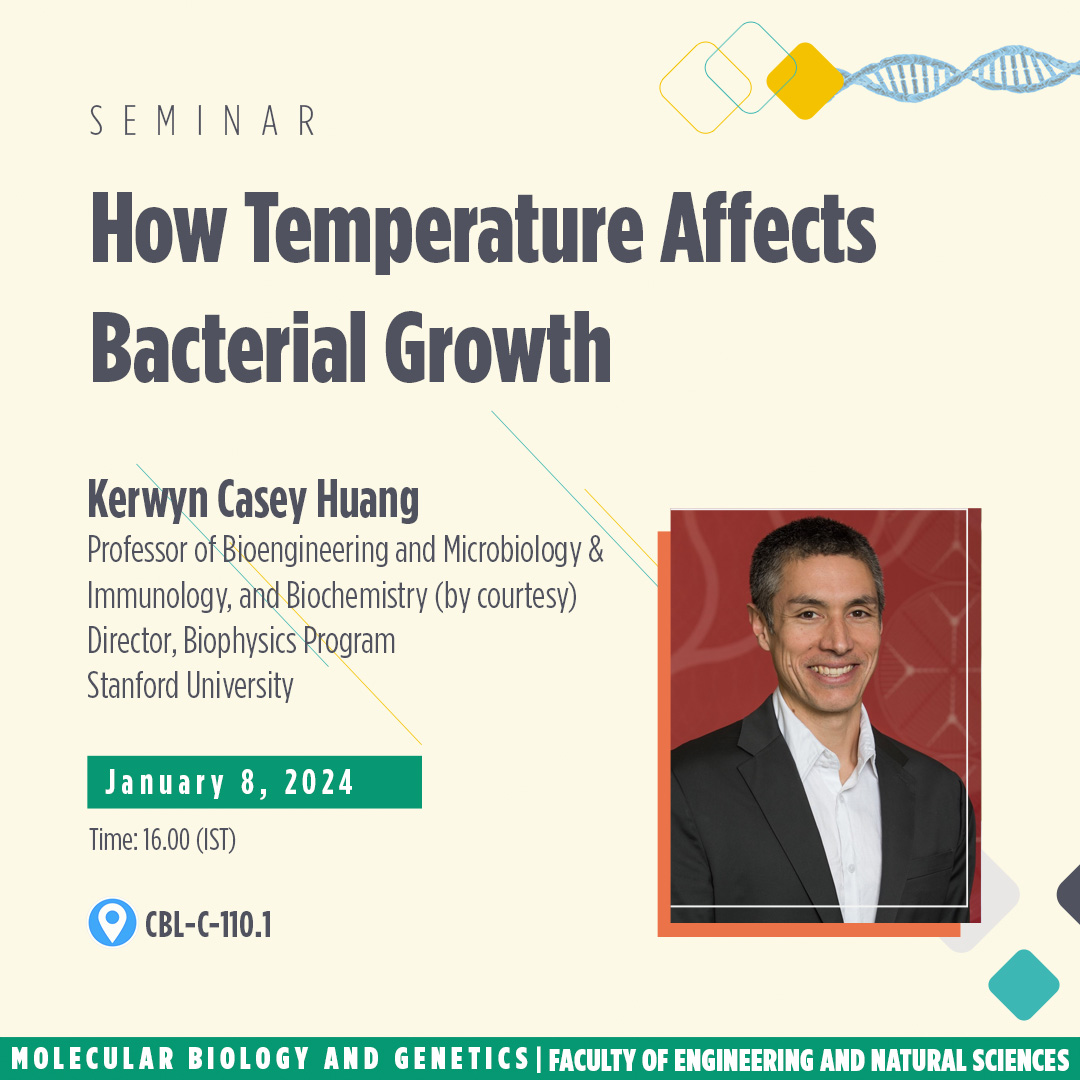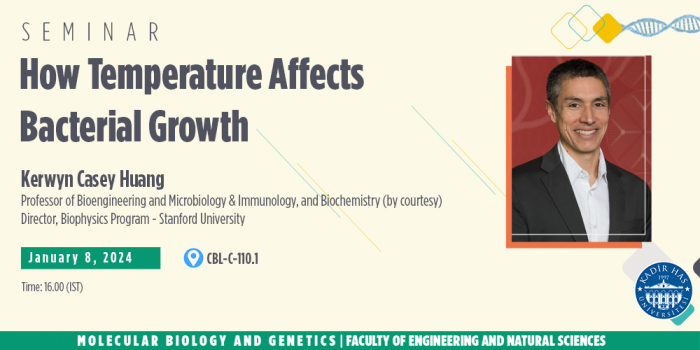
Moleküler Biyoloji ve Genetik Seminerleri: Prof. Kerwyn Casey Huang

Moleküler Biyoloji ve Genetik Bölümümüzün organize ettiği seminer serisinin yeni konuğu, Prof. Kerwyn Casey Huang (Professor of Bioengineering and Microbiology & Immunology and Biochemistry by courtesy; Director, Biophysics Program Stanford University) olacak.
Prof. Huang’ın “How temperature affects bacterial growth” başlıklı konuşmasını 8 Ocak Pazartesi 16.00-17.00 arasında CBL-C-110.1 nolu salonda takip edebilirsiniz.
Özet: The impact of temperature on growth is typically considered only under heat- or cold-shock conditions that elicit specific regulation. Over intermediate temperatures, the growth rate of all cells varies according to the Arrhenius law of thermodynamics; growth rate dynamics during transitions between temperatures remain mostly unstudied. How this behavior arises and what determines temperature sensitivity are largely unknown. Using a device that enables single-cell tracking during switches across a wide range of temperatures (0 °C to 47 °C), we show that many bacteria respond to temperatures upshifts on a characteristic time scale of ~1.6 doublings at the higher temperature, regardless of initial/final temperature or nutrient source. We rule out transcriptional, translational, and membrane reconfiguration as potential mechanisms, and instead discover that an autocatalytic enzyme network incorporating temperature-sensitive Michaelis-Menten kinetics recapitulates all temperature-shift dynamics and successfully predicts the altered temperature responses observed under simple-sugar and low-nutrient growth conditions. These findings suggest that the temperature sensitivity of metabolite flux dictates responses to temperature fluctuations.
Konuşmacı Hakkında: My laboratory employs diverse interdisciplinary methods of inquiry to understand the relationships among cell shape detection, determination, and maintenance in bacteria. Cell shape plays a critical role in regulating many physiological functions, yet little is known about how the wide variety of cell shapes are determined and maintained. Inside the cell, many proteins organize and segregate, but how they detect and respond to the cellular morphology to end up at the right place at the right time is also largely mysterious. The group uses a combination of analytical, computational, and experimental approaches to probe physical mechanisms of shape-related self-organization in protein networks, membranes, and the cell wall. Current topics of interest are (i) cell-wall biosynthesis, (ii) the regulation and mechanics of cell division, (iii) membrane organization, and (iv) membrane-mediated protein interactions. Ultimately, the manipulation of cell shape may provide a direct tool for engineering complex cellular behaviors.
